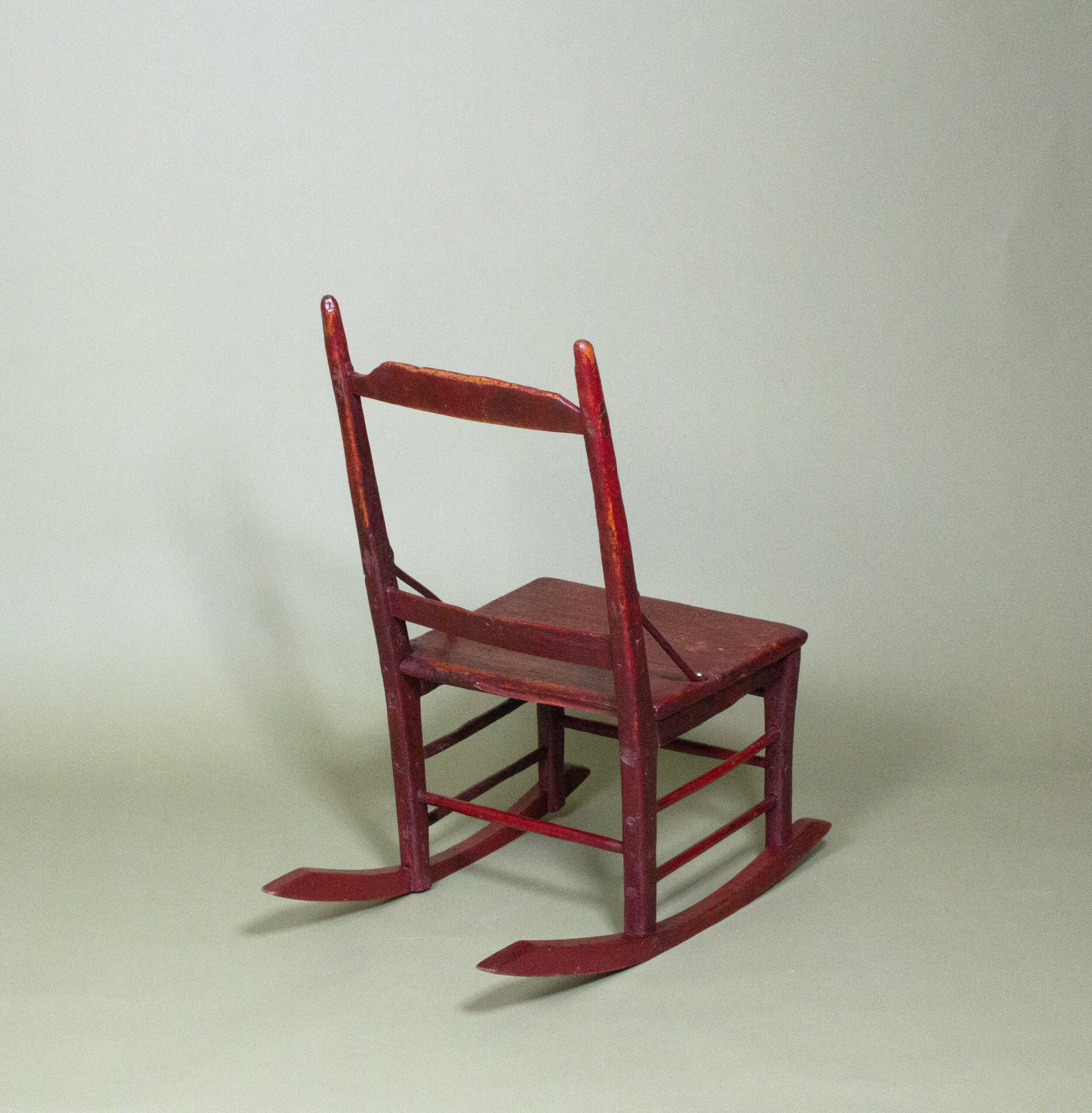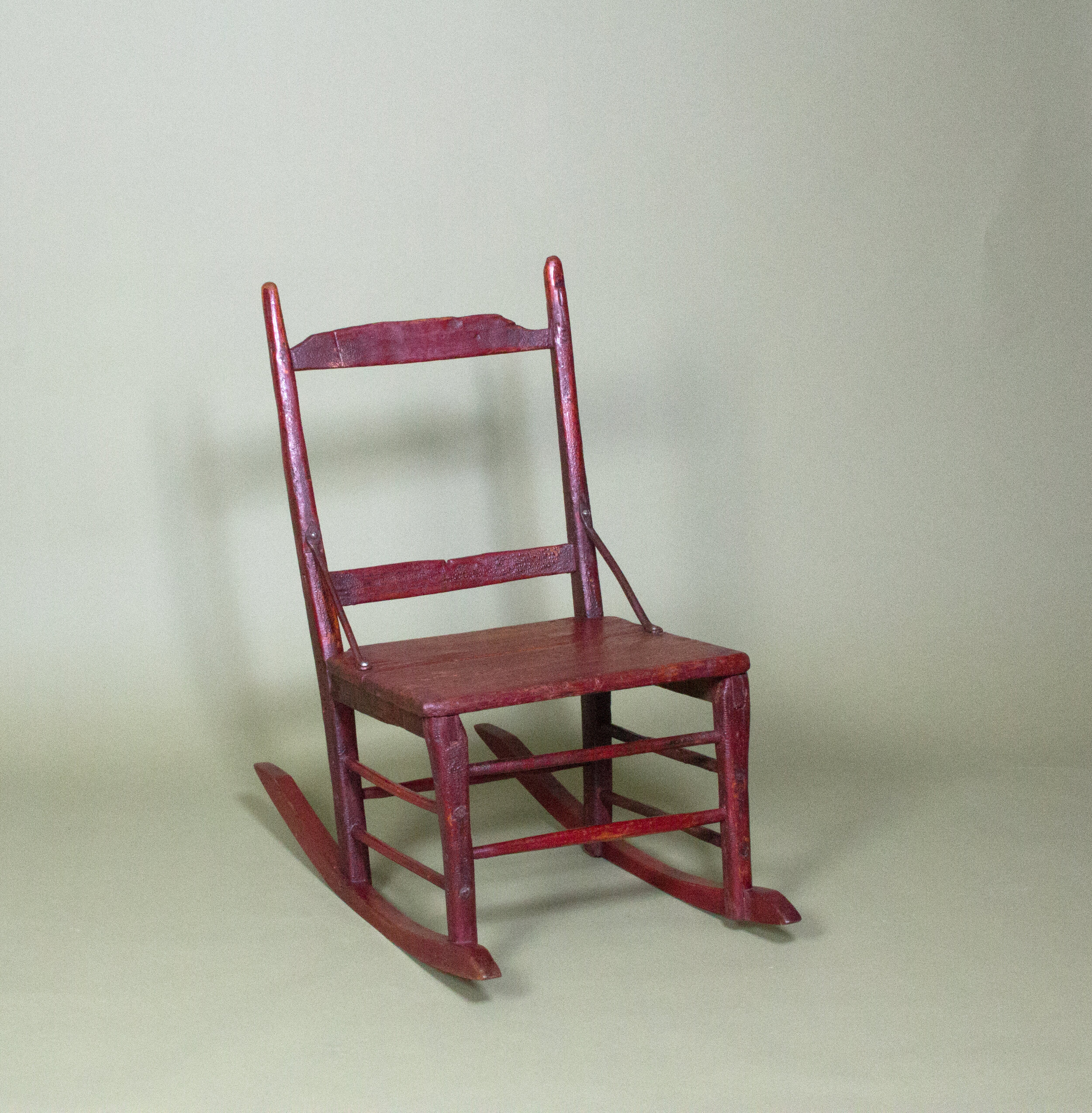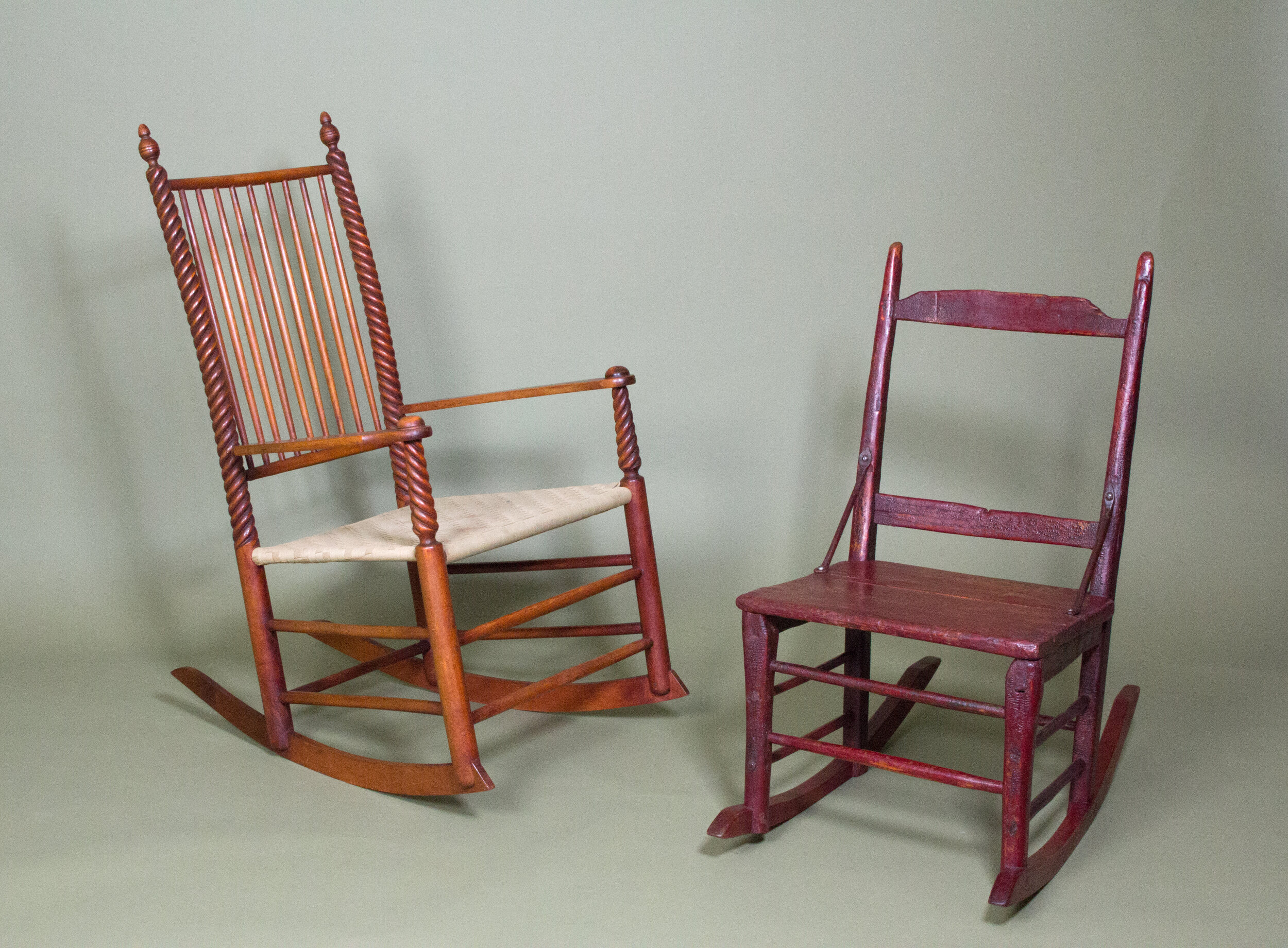Rocking chair enfant






Rocking chair enfant
Chaise à bascule enfant en bois peint rouge, à renforts métalliques
Art populaire, France
XIXème siècle
H 79 x L 43 x P 75 cm
Patine d’usage, bon état restauré
Rocking armchair child in red painted wood with metal reinforcements
Folk art, France
XIXth century
H 79 x W 43 x D 75 cm
Use Patina, Good restored condition
Un fauteuil à bascule ou rocking chair, ou chaise berçante, ou chaise à bascule (français québécois) ou berceuse (français canadien) est un siège dont les pieds avant et arrière sont reliés par deux bandes latérales incurvées permettant à la personne de se balancer d'avant en arrière. De cette façon, le fauteuil n'est en contact avec le sol que sur un point de chacun de ces patins de bois, et le fauteuil peut se balancer selon les souhaits de son occupant.
Ce meuble typique de la culture anglo-saxonne fut réalisé selon des modalités diverses. Celui-ci destiné à un enfant est en bois peint rouge et il a été réparé et renforcé par des montants métalliques. Il est d’usage dans l’art populaire et dans le monde paysan d’utiliser les meubles et objets tant qu’ils sont encore réparables. cela révèle non seulement une attention à la durabilité de la fabrication par l’artisan qu’au soin apporté à ce que l’on utilise tout au long de sa vie et qui pourrait être transmis. Les hommes passent et les biens demeurent.
A rocking chair or rocking chair, or chaise rockante (Quebec French) or berceuse (Canadian French) is a seat whose front and back legs are connected by two curved side bands allowing the person to swing back and forth. In this way, the chair is in contact with the ground at only one point on each of these wooden legs, and the chair can rock according to the wishes of its occupant.
This typical piece of furniture of the Anglo-Saxon culture was made in various ways. This one intended for a child is made of red painted wood and has been repaired and reinforced with metal uprights. It is customary in folk art and in the peasant world to use the furniture and objects while they are still repairable. This reveals not only an attention to the durability of the manufacture by the craftsman but also to the care given to what is used throughout its life and which could be passed on. Humans pass on and goods remain.



